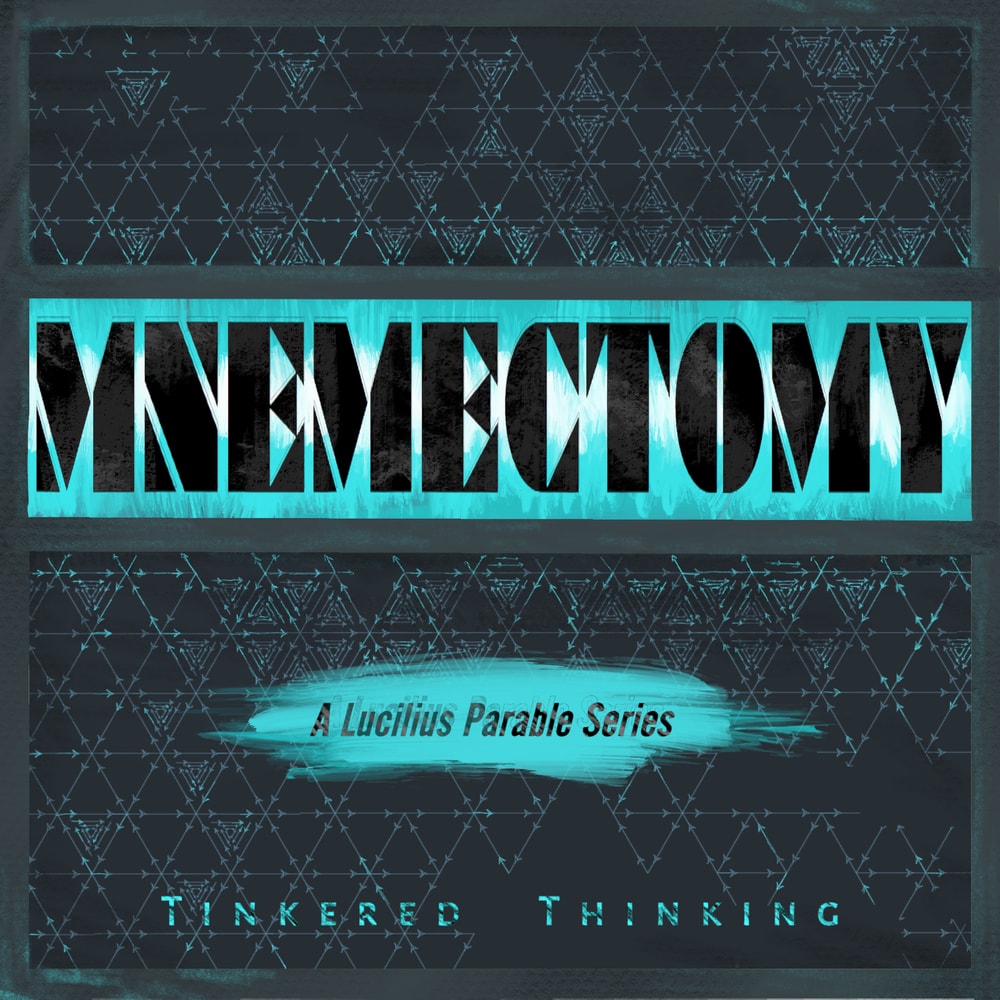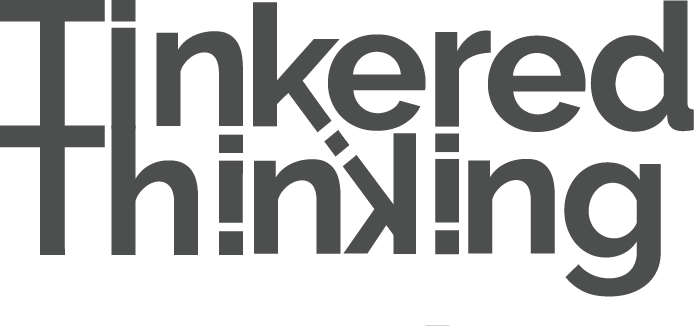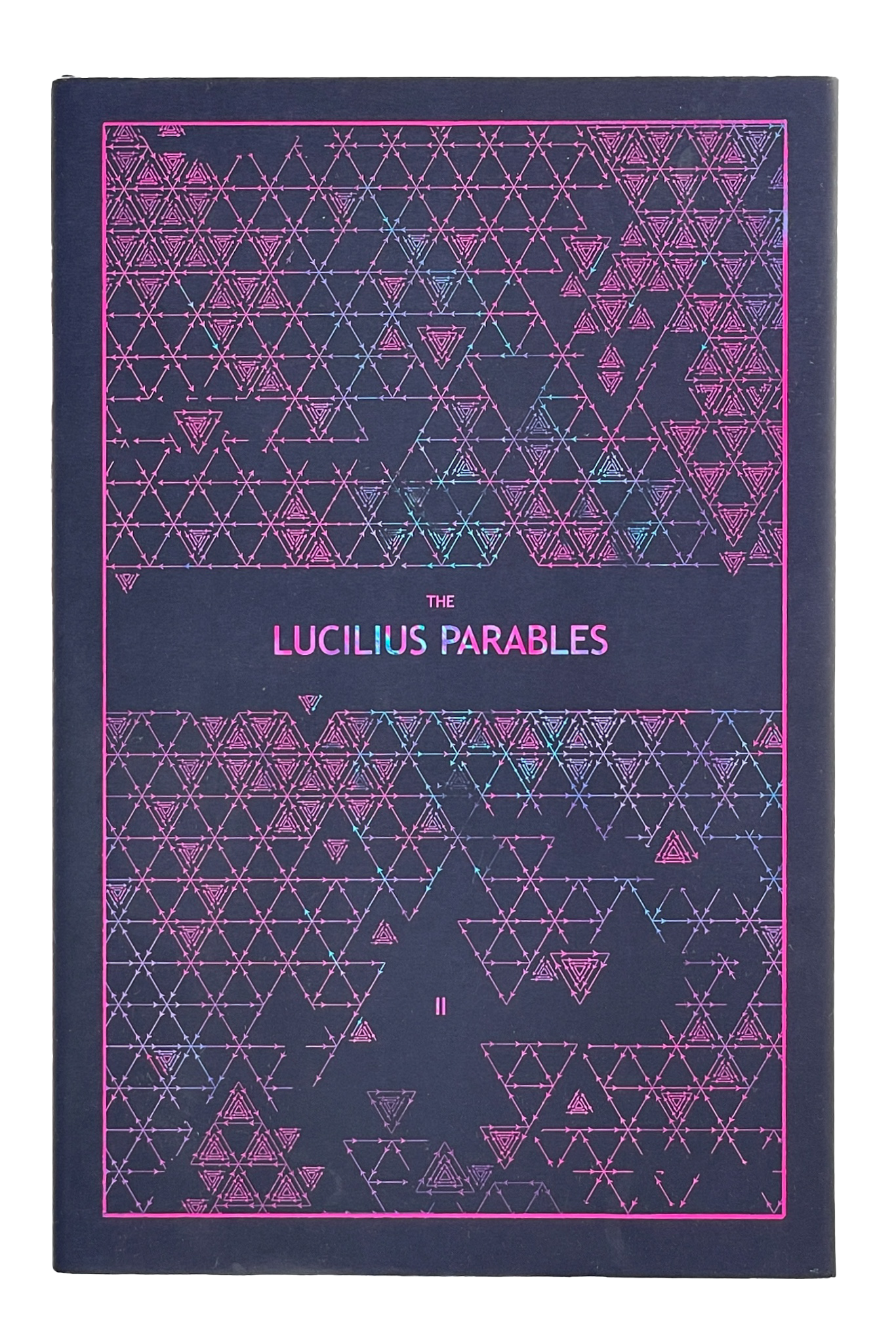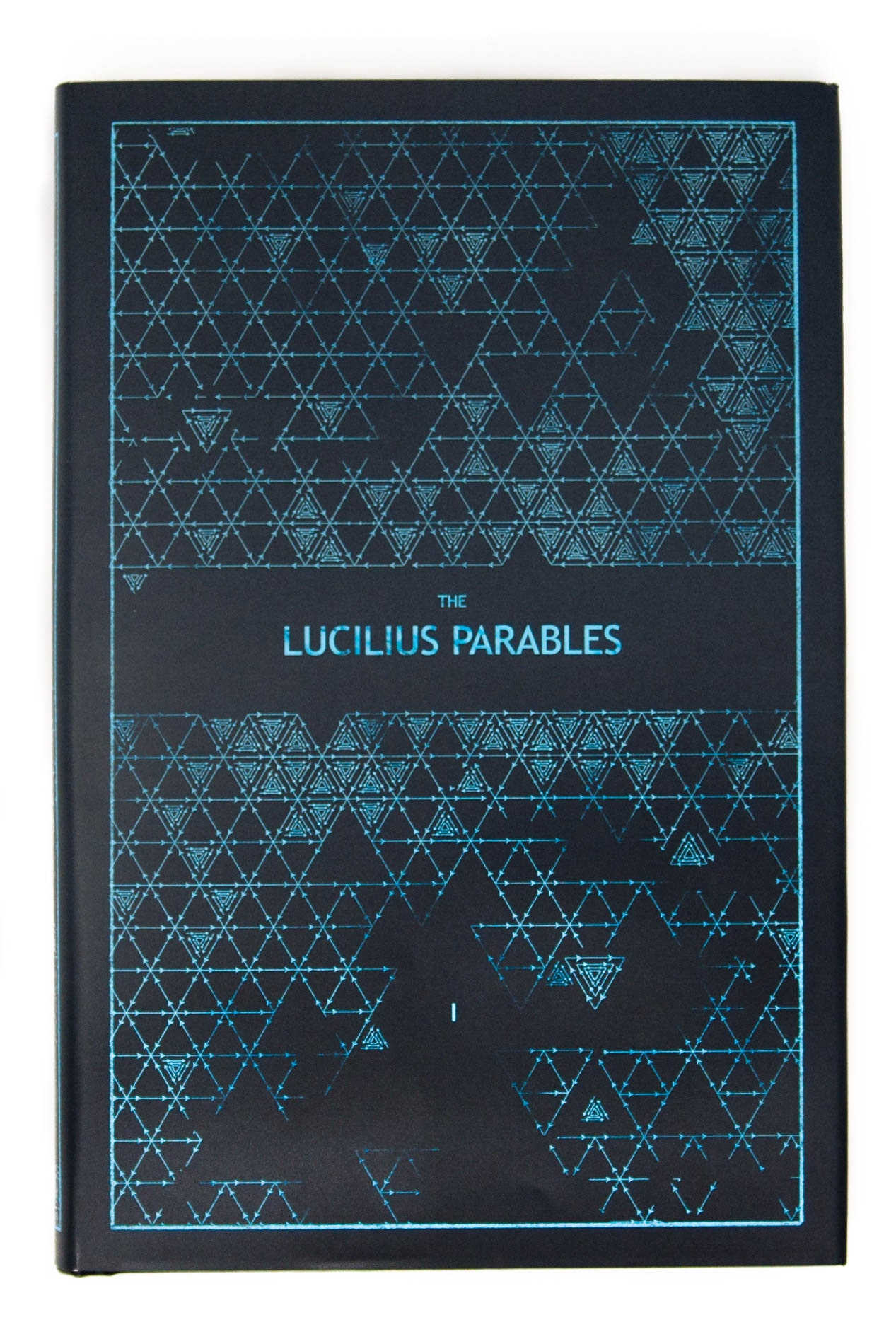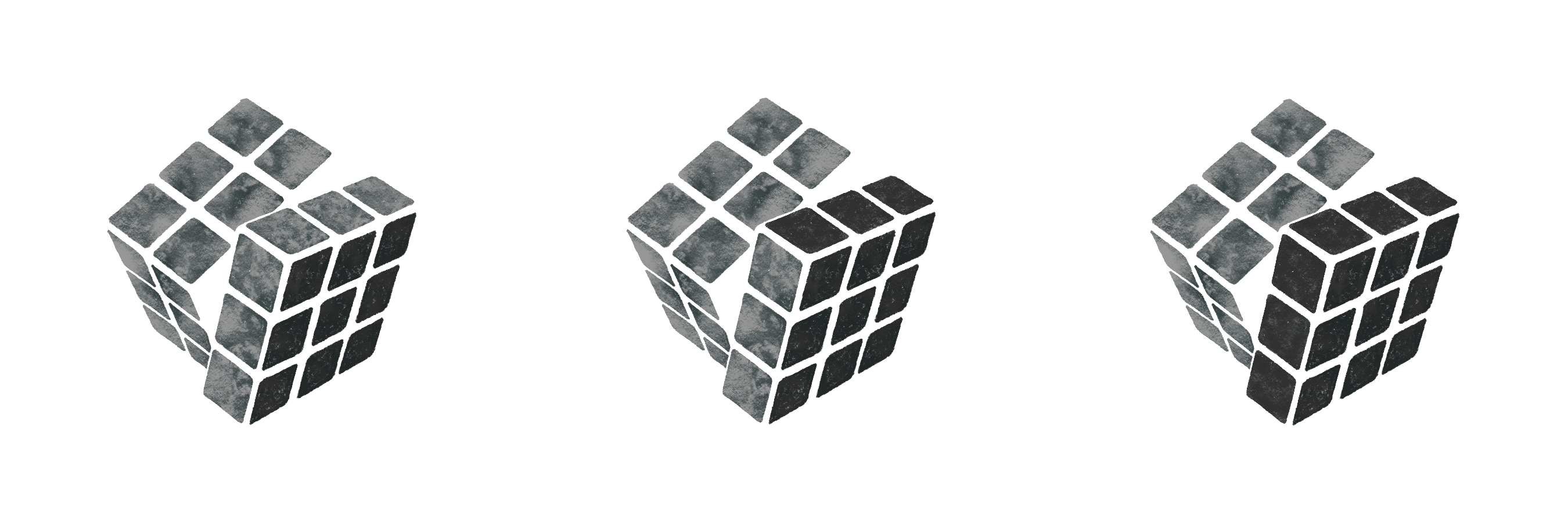Daily, snackable writings to spur changes in thinking.
Building a blueprint for a better brain by tinkering with the code.
subscribe
rss Feeds
SPIN CHESS
A Chess app from Tinkered Thinking featuring a variant of chess that bridges all skill levels!
REPAUSE
A meditation app is forthcoming. Stay Tuned.
AXIOMATIC MISTAKE
January 18th, 2019
All our actions, plans, goals and thoughts operate with underlying axioms. An obvious one is perhaps the reliability of gravity. We hold it as an under lying premise of our time awake and alive that some magical-seeming force is going to keep us close to the earth, perpetually. Axioms about physical reality, particularly regarding how our own body moves in space in concert with gravity are perhaps the first axioms that we learn considering that crawling and attempts to stand are succeeded before most other milestones of growth that infants achieve.
However, the process does not stop, and we continue to intuit new axioms as we move forward. Nothing guarantees that these axioms are correct, and since such axioms can be so simple, we can spend much time, years, decades, even a lifetime without realizing that some of our underlying suppositions about reality are just plain wrong.
As the story species, we experience narratives as far stickier concepts than subtler, more counter-intuitive ideas. Indeed our brains seem almost hardwired to cling to a story, however fatuous, rather than confront new information that causes friction with our underlying axioms.
When a new piece of information is anything short of a slap in the face, we tend to have a talent for ignoring that piece of information.
When people do experience a big wake up call, not only is the experience destabilizing, but often such people will reflect on the past and wonder how they could have been so blind to certain things.
Hindsight is 20/20 as we like to say. And this phrase gets at the heart of our relationship with our own axioms.
Perhaps we held the axiom that a certain person could be trusted. Perhaps due to our pesky wish for certainty and an identity we can cling to, we ignore the red flags, the warning signs, the bits of information that seem to contradict our underlying axiom. Until they either add up, or an event that simply cannot be ignored is in clear and present conflict with our original axiom.
We can look at something even simpler, something harmless, almost ridiculous. We’ve all seen someone playing a sport who gets a hold of the ball and accidentally runs in the wrong direction. It’s often funny because the mistake is one of such obvious naiveté. The player simply got disoriented, or forgot that the teams had switched sides. The axiom of such a situation could not be simpler. It’s just two parts representing each team’s side which are identical. But the mistake is one we can make in all manner of ways in other parts of life. Picking up the ball and accidentally scoring for the wrong side.
Think for a moment about that player, picking up the ball and running in the wrong direction. When would be the worst time to reassess the axiom of whose side is whose and when would be the best time. The answers are obvious. Reassessing the axiom as soon as possible would be best. Simply because the longer we run with the wrong axiom, we are amplifying the mistake, creating more of a problem the longer we keep going with the wrong direction. If we ever get the sense to turn around and double check what is going on, we’ll realize we’ve made more work for ourselves if we wish to achieve our goal. The error has compounded, all because of an incorrect thought.
Mental errors of such kinds are unavoidable, but we can test them strategically by a combination of being mindful about our priorities in life and developing metrics to determine if any real progress is being made towards the goals we’ve prioritized. The last missing ingredient is to take action and continually poke reality for feedback.
The player running in the wrong direction is gleefully misguided, thinking they are far ahead of the pack. While the pack doesn’t even chase, but watches as a battery of embarrassment charges with each step. Poking reality in this case would be as simple as looking back to double check awareness of the whole situation. This is the invaluable benefit of having a Well-Oiled Zoom. Being able to harness and direct a laser-like focus is an excellent ability, but to focus on the wrong task doesn’t just waste time, it can severely undermine all sorts of other aspects of our hopes and goals.
For this reason, we should perhaps be suspicious of our own deeply held beliefs and axioms. For the very reason that they are placed more insidiously than anything else and because of this we can be lead far astray.
This episode references Episode 54: The Well-Oiled Zoom, and Episode 32: Rear-View.
CAUTIOUS TRAITOR
January 17th, 2019
This episode is dedicated to S.E. Wells for inspiring a meditation on the following concepts.
The roots of the word ‘caution’ point towards a meaning that is more akin to observation. We might think of the observational phase required to take effective precautions.
If the meaning and use of the word ended here, we might be able to keep it handy as a useful tool, however, the word clearly has a modern dimension that weighs us down.
‘Being cautious’ is generally praised as a good thing. It invokes the roots of the word – that of being observant, looking forward, recognizing dangers. It sings a song similar to the thoughtful pause. But like a mockingbird, caution is a wholly different animal when compared to a genuinely thoughtful pause.
The thoughtful pause is devoid of any preconceived emotion. Whereas caution carries a deep bass note of fear.
Our thinking goes that we should be cautious of real dangers and these real dangers are something to wisely fear. And yet, we live in the safest version of human society yet conceived. The real dangers that we should genuinely fear are now far less obvious. Texting while driving is an excellent fit here. Every year many people die because someone had to text someone about being 5 minutes late, or about something they just heard on the radio, or any variety of thought that completely lacks urgency. This strange phenomenon is something that we should actually feel fear about, and yet, complacency is the overriding natural disposition. In such a case, where have our evolutionary tools of caution and fear gone? Unfortunately they are at work at far less appropriate tasks. Fear is without a doubt chiefly employed by the human psyche as a needless limiting factor on our own personal agency. It is the roadblock we place in front of ourselves.
While ‘facing one’s fears’ is a healthy maxim touted as the courageous option, it is caution that whispers a slow drip of reasons into our argument, slowly soaking it, weighing it down, until we cannot move forward for our own benefit. Caution has become that I.V. drip through which fear slowly but steadily subverts our most productive notions.
We must be cautious of letting our fear control us, hold us back, and what this should mean is taking a good look at what real risks are present – if any - and then throwing caution to the wind and diving straight into that thing we fear. Chances are there are no true real risks. Most of the things that we fear doing in life are not at the risk of life itself which is really the only thing that we should be mindful of when hesitating to move forward with our aims.
Caution is a double agent, masquerading as our ally, but in secret it’s an operative of fear. The two live in the same house of our mind, pretending to speak different languages, feigning knowledge of one another. But like an aging spy working for some anachronistic agency, these mechanisms are long past their prime.
In fact, caution may be a bigger problem than fear itself. Fear, properly framed, can function like a compass that actually illuminates the directions we should pursue in life. This is how ‘facing one’s fears’ can be a powerful directive. But it’s caution which tempers our muster, slows our rise to action, seeds doubt and sets our thoughts chasing their own tails in unproductive loops of circular thinking.
This episode references Episode 23: Pause, Episode 63: The Etymology of Fear and Episode 57: Compass.
SLINGSHOT
January 16th, 2019
Any neighborhood kid knows that sometimes, in order to spring forward as fast as possible, you’ve got to move backward.
Now it’s one thing to simply take a step back in life. But if that step back is one that is difficult, one charged with resistance, one requiring a confrontation with fear, then it might be the sort of rocket fuel needed to get us moving forward much faster than we’ve ever gone before.
Our culture is primed with talk about forward motion. Perpetually forward is the name of the game. But just like the unwise explorer blindly follows a compass without looking around, sometimes the most efficient way forward requires a completely counter-intuitive step in a direction that seems completely arbitrary, even at odds with our aims.
Few individuals haven’t fooled around with some kind of slingshot at some point in their lives and despite how little time may have been spent with this boy toy, it’s fairly intuitive that pulling back on the sling isn’t just a factor for how fast our projectile will shoot forward. It’s also a function of aim. With a slingshot, we are in a sense aiming backwards. By pulling the projectile and sling backwards, we aim by pointing the sling exactly away from our target. How fast and sure we are to hit our mark depends on how much we charge our shot by pulling back.
All this might seem fairly unavailable outside of the world of slings and bows, however the analogy can be a powerful one if we remember that it hinges on the connection between tension in the sling and the tension we feel emotionally – most commonly in the form of some kind of fear. For example, how many people are totally devoid of passion for their job, and yet keep at it? Quitting somehow seems or feels like a step backward in life. It’s a loss of security and comfort about where the next paycheck is coming from, and in tandem: the next meal, the next rent check, and so on and so forth. And yet, for someone who is generally attached to this kind of security, what would be more motivating than to be without such a source of income, regardless of how crummy the job is? Such a person is charged with a kind of fear, perhaps even a desperation to move forward. This is how the slingshot carries into our daily life.
We can see this in a more positive way, such as with a person who is looking forward to a particularly splendid meal. Such an individual might abstain from breakfast and lunch in order to build up an appetite for a meal that promises to be a particular treat. Doing so is in some regard uncomfortable, just as quitting a crap job in order to motivate one’s self to find a better circumstance is uncomfortable, albeit in a different way.
Just as the pitcher charges a throw by bringing the arm far behind, and likewise with the batter, we would do well to keep in mind that sometimes, in order to move forward – to spring forward – we must move backwards.
Perhaps the best time to hold this image in mind is when we find that we are already moving backwards, by circumstance, by the vicissitudes of life or even by the planned stratagem of an opponent. Instead of resisting and perpetually trying to move forward, we might wonder how such a direction can be leveraged in orders of magnitude for our benefit. Resisting the flow of events, instead of trying to see them with manipulative and strategic clarity is like trying to shot a slingshot while pulling the sling back less and less. With a slingshot it’s intuitive that we have a less powerful shot the less we pull the sling back, and this is the core of what makes it a good analogy for circumstance.
wrong direction with as much force as possible.
If in whatever circumstance, or with which ever goal, the current seems against us, our efforts seem to move us backwards, it might be of enormous benefit toa class="internal-link" href="http://tinkeredthinking.com/index.php?id=33"> pause for a moment and wonder if the way to our goal becomes more efficient by moving away from that goal in some way.
It’s one thing to grind one’s way through an obstacle, or to go around that obstacle, but it’s quite another to let that obstacle push you back into a circumstance that eventually rockets you towards a goal.
This episode references Episode 238: A Lucilius Parable: The Bounce and Episode 23: Pause.
LIGHTFOOT
January 15th, 2019
We’ve all heard that joke. Someone’s going for a jog and two friends look on. One looks at the other and says, “why would you run if nothing’s chasing you?”
The joke is to comfort the lazy, but it’s missing half the potential humor. For those who are able enough to jog, we can sprint when we need to. And perhaps it’s because we are running away from something, perhaps something is chasing us, or perhaps we are running towards something.
The jogger is literally running towards the spot where a healthier version of their body will be. This is the obvious reason for such exercise, along with any other benefits, both in terms of physical feeling and mental wellbeing.
But this image of sprinting towards something good or sprinting away from something bad can be a useful metaphor. Especially when the reasons are combined.
Why are you working so hard on that project?
Because of the reward that may await with the finish, and the potential for that reward to simultaneously usher in a new and better life and push back the current conditions we seek to escape.
This metaphor works for any goal, no matter how good we have it in life. With any goal we aren’t simply looking to achieve something, we are also trying to avoid a life were we didn’t take the chance.
This simple concept is at the root of what many people find themselves thinking about at the end of life. A simple experiment that is worth repeating on one’s own is to seek out people who are in the last decade of their life and ask them what if anything they regret.
Most all of them will have the same response: There’s little to nothing to regret, but many of them wish they’d taken more chances, attempted more things, chased after more goals.
This answer puts a subtle underscore beneath that monster that chases us while we sprint towards better things. This monster doesn’t catch up if we stand still. If we stop moving forward than it instantly appears. This is part of the reason why it’s more important to simply start when it comes to our potential plans instead of trying to over think those plans towards perfection. Valuable time is being lost. Life is instantly morphing into the one we wish we’d done more with. This gives us a reason to run even if we’re not sure what to run towards. Luckily we’ve evolved to think pretty well on our feet, and like athletes zigzagging and crisscrossing courts or fields, we can have faith that when we see a goal that feels worthy, we’ll be light-footed enough to pivot and take all our movement in the right direction.
This episode references Episode 72: Persevere Vs. Pivot.
CONCEPTUAL IMMUNE SYSTEM
January 14th, 2019
Thinking is our most powerful tool. But any tool needs a medium through which to function. And if thinking is the tool, then reality is the medium. Through language, visualization and conception, we can imagine all sorts of things that do not exist, and we can make abstract frameworks for the things that we see do exist. But, if thinking is left to it’s own devices, it can generate its own fantasy land where it’s potential usefulness rapidly declines.
Just as the body’s usefulness will decline if not protected by an immune system, so too does our mental health need a kind of immune system through which to introduce rigor and honing. Taking action based on our thinking is exactly this sort of immune system for belief systems, conceptual understandings and thinking in general.
We might think for a moment of the street side prophet who can talk ad infintum based on a conceptual world that they have. Is such a person generally open to conversation and taking in new information? If you’ve ever had enough curiosity to try and engage such a person, you’ve perhaps found the answer is no. Such an individual is far more interested in the attempt to impose their ideas on the outside world. In such a case, there is no longer an even two-way street between the conceptual world and the real world. Such a two-way street is imperative for the health of the conceptual world because it’s through our interaction with the real world that our conceptual world is updated, and from a more robustly constructed mental conception, we can take more efficient action that is more likely to result in our imagined goals.
When we sit in thought on any given plan or idea for too long, we are undermining our mental abilities by expecting far too much from them. It’s a useful rule to take the smallest possible action on any new plan or idea as soon as possible. The feedback from reality (if there is any) is a far more helpful guide about which direction we should think than the hopeless task of trying to imagine all sorts of branching possibilities.
This is why many tech products are introduced without much fine-tuning. While the initial use might be aggravating for many, the feedback from users help the creators pivot the product in the most useful direction. This feedback loop helps get a clunky version one to an incredibly useful version x far more efficiently than wasting time and money trying to guess what will be useful and building something for that imagined world of guessing.
But this feedback loop should apply to all our ideas. If curiosity directs our attention towards some novelty, we do best to take the cue and investigate it’s possibility in reality in stead of simply following curiosity down a rabbit hole into a fantastic, albeit unuseful wonderland. As much as that word ‘wonder’ is handed around like some kind of child superpower, it’s most useful in small quantities punctuated by action in the real world. Wonder can become like a virus in the mind and an idea or plan about what to do can become like an infinite loop. We just get stuck imagining something in the real world instead of actually finding out. Pushing these plans and ideas into the real world is like pushing a compound through the rigors of the immune system. If the plan or idea is useful, then the real world will give us some kind of positive feedback, much like the immune system distributes the constituents of healthy food, whereas the real world will let a bad idea fall flat, much like a virus being steamrolled by the power of the immune system.
The most practical piece here is to watch out for any kind of rumination. When thinking goes beyond imagining a couple different branching possibilities, it’s time to scrap the process of thinking and start translating a plan to test the idea into real action. Only then can an idea truly evolve in the healthiest way possible.
-compressed.jpg)
